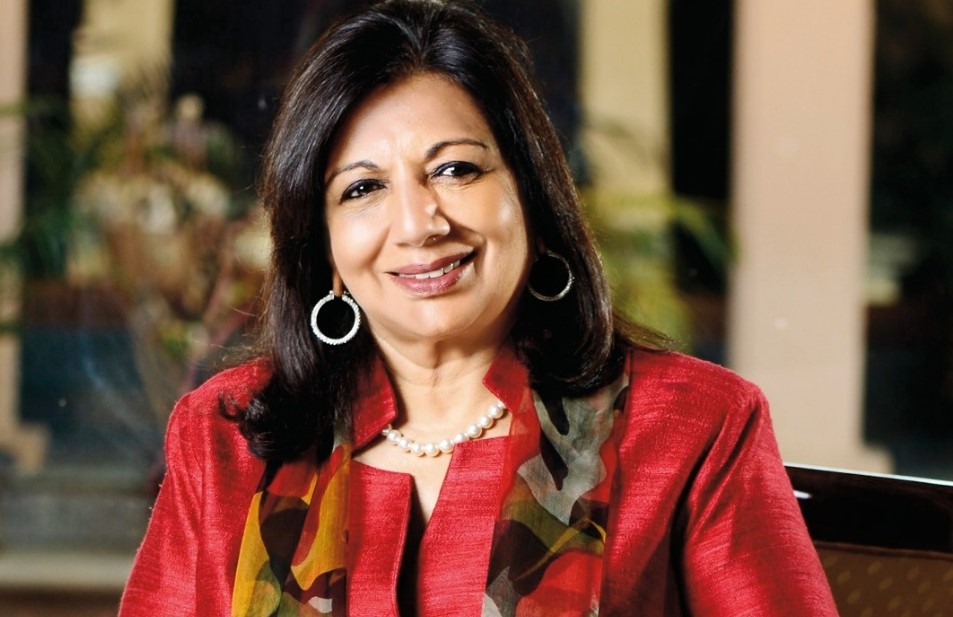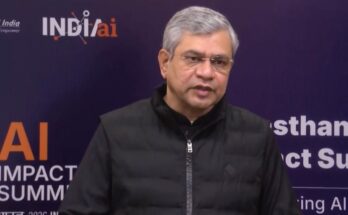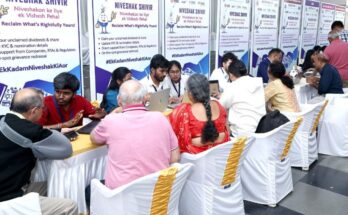New Delhi, Kiran Mazumdar Shaw, Executive Chairperson of Biocon, feels that India should start opening its lockdown from May 3 and become fully operational by end of June.
In an exclusive interview with IANS, Shaw said that data indicate that India is entering into a safe zone and has done a phenomenal job of flattening the Covid-19 curve.
Shaw added that the government will also have to provide a huge financial stimulus to boost industrial production across small, medium and large enterprises.
“The government will have to restart the economy with surveillance and safeguards. Opening up the lockdown needs some lifestyle changes, which we must all adopt. The government should continue to enforce social distancing measures and must not allow large public gatherings,” she said.
Emphasising that the panic around Covid-19 is due to Western media reports citing huge fatalities, she said, “However, if you look at the Indian data, it shows that the severity and fatality of Covid-19 among the Indian population are much less compared to the West”.
Here are excerpts from the exclusive interview:
Q: Has India flattened the curve for coronavirus and is it in a safe zone now?
A: Yes. India has done a phenomenal job of flattening the curve and the current data indicate that the country is entering into a safe zone.
Q: What kind of economic stimulus would be required for the Indian economy?
A: The Indian economy will need coordinated fiscal and monetary policymaking to tide over the crisis and lay the foundation for a growth revival. We will need some amount of quantitative easing to enhance liquidity in the economy.
The government will also have to provide a huge financial stimulus to boost industrial production across small, medium and large enterprises. The collapse in global crude oil prices is expected to halve India’s oil import bill, giving the government the fiscal space to announce a stimulus package to prop up the economy. Allocating $20 billion (0.3 per cent of GDP) of the oil savings to provide a stimulus package for industry is imperative.
The government will also have to come up with investment-linked and job-linked incentives tailored to the needs of a specific sector. Funds should be earmarked for a big infrastructure push as the construction industry absorbs the most amount of labour after agriculture.
We need to invest in building vital infrastructure like expressways, canals, power plants, ports, warehouses, affordable housing etc. This would be the best time to float long-term sovereign infrastructure bonds to fund these projects because yield hungry foreign investors are sitting on billions of dollars of liquidity.
SMEs and startups must receive funding for manufacturing, services and innovation. The Indian government may also provide such stimulus through advance purchase contracts for Covid-19 specific needs like tests, biomedical supplies, hospitalisation and immunisation.
Ayushman Bharat is an ideal vehicle to use to cover Covid-19 costs and pave the way for a universal healthcare system in the long term. A significant part of healthcare investment ought to be directed towards upgrading the primary health centres.
Also, debt-equity ratio norms need to be eased to provide more liquidity to the industry.
Q: How long should the lockdown continue after May 3 and what should be the exit strategy?
A: I think India should start opening its lockdown from May 3 and by the end of June, we should be fully operational.
The government will have to restart the economy with surveillance and safeguards. Opening up the lockdown needs some lifestyle changes, which we must all adopt.
The government should continue to enforce social distancing measures and must not allow large public gatherings. Malls, cinemas and restaurants should remain closed, and permission should not be given for big sporting events.
Wearing of masks, regular sanitisation of public places, disinfection of common surfaces and temperature screening of people in public places should be mandatory.
Testing should also be scaled up to include the general public, especially the asymptomatic cases. Widespread antibody testing is a critical step towards determining the onset of herd immunity.
Q: Why is there so much panic about Covid-19? Is it justified?
A: A lot of the panic is stemming from Western media reports which talk of the high mortality numbers in the US, Italy, Spain etc. However, if you look at the Indian data, it shows that the severity and fatality of Covid-19 among the Indian population are much less compared to the West.
One reason for the low mortality rate in India has to do with the disproportionately young population of the country, where 90 per cent of the population is below the age of 60. The world over, about 80 per cent deaths have been reported among people aged 60 and above. Therefore, after the lockdown is eased, our focus should be on protecting the vulnerable sections, especially those over 60 years of age. Rest of the young workforce under 50 should be allowed to go back to work to sustain the economy.
We now need to focus on removing the social stigma of the Covid-19 infection as well as remove the fear psychosis and paranoia that has hijacked our society.
Q: How has the Indian response been to Covid-19 and how effective have the steps been?
A: India has rightly won praise from the WHO for its tough and timely efforts to control the spread of coronavirus. A 21-day nationwide lockdown, extended by three weeks, has stemmed a surge in infections and a rush of hospital admissions resulting from Covid-19 complications.
The lockdown period has been utilised for preparedness planning in terms of building capacity in our healthcare infrastructure. Over 580 hospitals across the country have been prepared to treat Covid-19 cases, with a capacity of over 1,00,000 isolation beds and 11,500 ICU beds.
The private players have also joined hands in this mission of combating Covid-19 and have created a step down model by converting hotels, guesthouses and hostels into dedicated Covid-19 nursing centres.
Additionally, the Indian manufacturing sector has stepped forward to ramp up the manufacturing capacity for Personal Protective Equipment (PPE), diagnostic kits, masks and ventilators
A lot of research effort is currently on with several Indian pharma companies and research institutes collaborating for developing vaccines against Covid-19 as well as finding the right drug to treat complications arising out of the disease.
Several state governments have set up plasma banks and have started collecting blood samples of recovered Covid-19 patients after seeking their consent, as convalescent plasma therapy has proved effective in helping treat patients.




